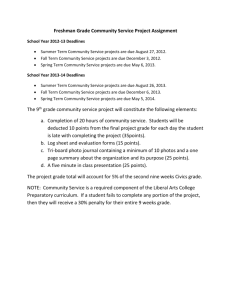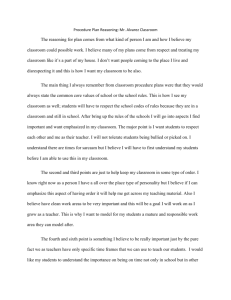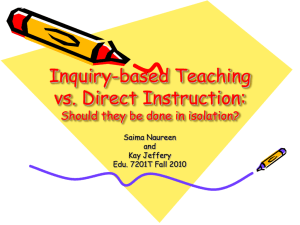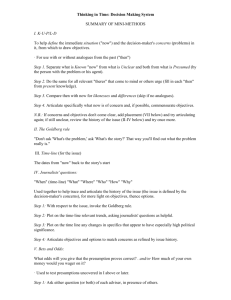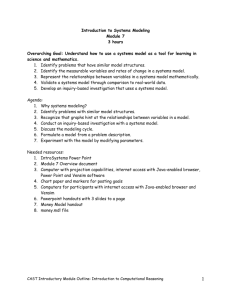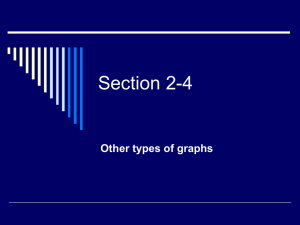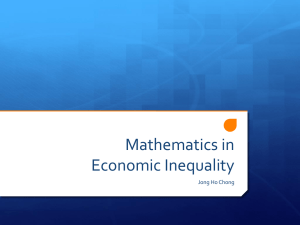Grantsmanship
advertisement
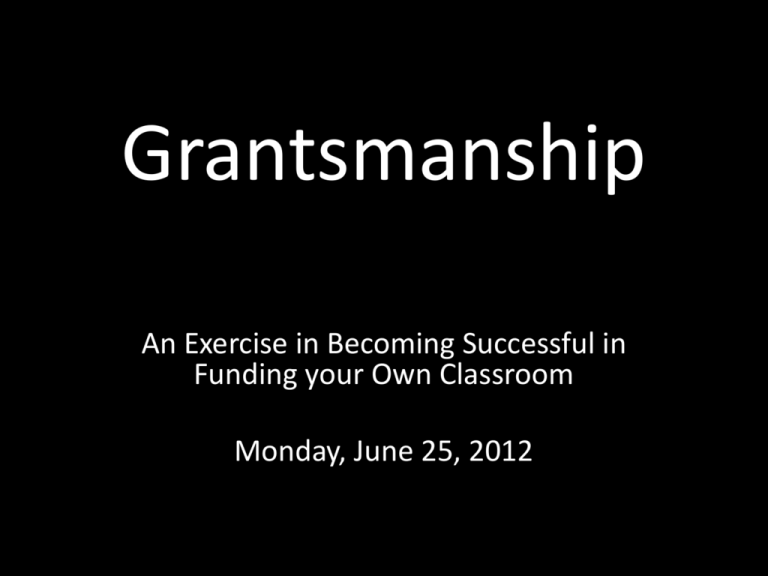
Grantsmanship An Exercise in Becoming Successful in Funding your Own Classroom Monday, June 25, 2012 Why Bother? • Statistics in your favor • Professionalism • Control CC-RWR June 13, 2011 2 Summer Time-Line • Monday, June 25 • • • • Tuesday, June 26 • Identify target funding source(s) and deadlines – download forms • Outline need, goals and objectives Wednesday, June 27 • Outline project activities • Identify budget items Thursday, June 28 • • Introduction/discuss project ideas Specify outcomes to be measured/evaluation process Friday, June 29 • Final review/editing/polishing of proposal outline June 13, 2011 CC-RWR 12 Brass Tacks (as in, getting down to) • Developing the proposal idea – Defining clear goals and objectives – Writing a compelling need statement – “TELL YOUR STORY” • Identify outcomes and evaluation •June Three “P”sCC-RWR 13, 2011 8 Planning • Start Small, Think Big • Develop your skills/confidence by targeting small awards ($300-500) • Plan from outset for a project that can grow/span for than a single year • Use your evaluation data to revise plans/support your argument for additional funding/new grant • Establish Time-line/Think Ahead • Six-nine month lead time not unreasonable • Many Spring deadlines June 13, 2011 CC-RWR 6 Pathways • Identifying an idea • Selfish-How will $ help my classroom? • Broader need-What other program/learning goal will be advanced? • Who is most likely to send $ my way? June 13, 2011 CC-RWR 4 Partners • Planning • Editing • Execution • Evaluation – Your Data June 13, 2011 CC-RWR 5 Setting the Stage • Decisions • • • • Grant=Innovation=Change Timing 80/20 rule (Pareto Principle) Pathways and Partners CC-RWR June 13, 2011 3 Pareto Principle • AKA the 80/20 Rule. • 20% of a grant-writer’s activities are responsible for 80% of the results. – Your highest value “20%” boils down to telling your story. – Your story is the glue holding the proposal together. – Your story provides the basis for your individual giving. – Your story is what writes your website copy. – Your story isn’t your mission statement. It’s not the 937 high school students you serve. – Your story isn’t even “The Story,” for you’ll never have just one. CC-RWR 3 June 13, 2011 Relevance • So, how you can better communicate your message? – Doesn’t needs to be more complex than it really is. You don’t need to take a “storytelling” seminar or learn a lot of jargon. • Another way to think about 80/20 – Devote ~80% of the time/effort in writing a proposal to project design and planning. – The last 20% is devoted to writing the proposal. • You cannot write a competitive proposal without devoting the 80% in design and planning. Do not write until you have planned! (From: http://www.gea.gsu.edu/Grants/grant_writing.html ) CC-RWR June 13, 2011 3 Strategies-Proposal Idea • In your classroom • Identify problem areas • Lack of inquiry-based activities • Poorly motivated students • After-school efforts • School-site • Build science division • Joint projects/teacher partners June 13, 2011 CC-RWR 9 Strategies-Need Statement • Become familiar with national/local initiatives • Develop “short-list” of agencies to target • Adapt/adopt project goals to align • Use “buzz-words” (examples easy to access) • Inquiry-based • Contemporary • Partner • Perform polls/quantitate deficiencies • Test scores • Questionnaires June 13, 2011 CC-RWR 11 • Dream “yume” • From: www.pacificakido.org June 13, 2011 CC-RWR 13

